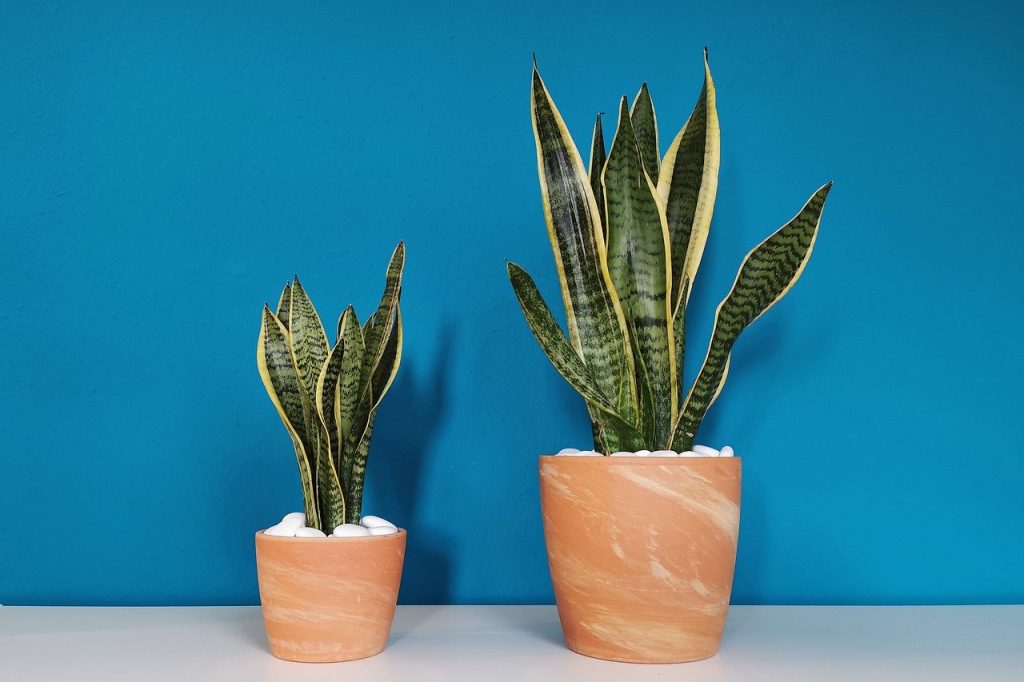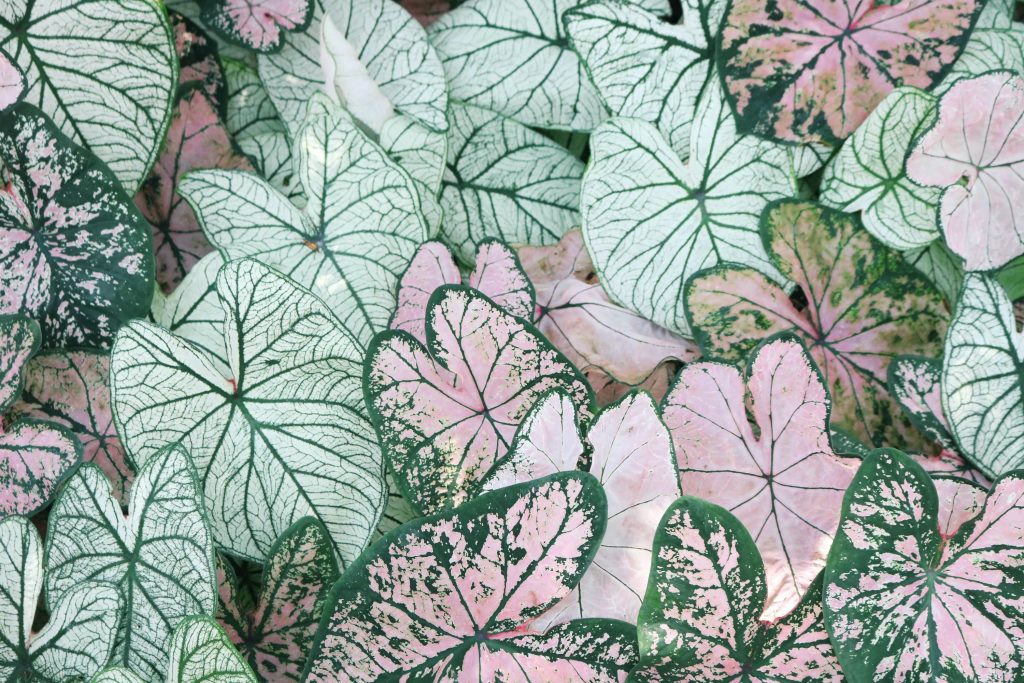It was love at first sight for me and my Tradescantia Nanouk, aka Fantasy Venice plant. I absolutely adored the plant’s gorgeous pink-striped leaves, deep purple stems and pastel-toned blooms.
One of the prettiest pink houseplants around, the Tradescantia Nanouk is a relative newcomer to the house plant scene, but is already a big hit on Insta. In this guide, I will show you how to treat this photogenic plant right, by sharing exactly what I’ve learned while growing one of my own!
Keep reading to discover everything you want to know about caring for your Tradescantia Nanouk. Let’s get started by taking a look at where and how the Fantasy Venice originated.
Table of Contents
About Tradescantia Nanouk
Like Stromanthe Triostar, Tradescantia Nanouk is famous for its stunning foliage. It’s a year-round houseplant that really shines during all seasons. Tradescantia Nanouk has dark purple stems topped with deep green leaves featuring white and pink stripes. The unique patterns make every specimen a one-off!
We have The Netherlands to thank for Tradescantia Nanouk, as it was specially created there by using cross-pollination. This has produced a hardy, captivating plant that tends to thrive, so it’s not difficult to care for at all.
If you want to know more, read on to find out all the tips and hints that will make sure your Tradescantia Nanouk plant is the best around! From watering and room temperature to issues that may crop up or Tradescantia Nanouk propagation, all the necessary know-how is covered here.

Tradescantia Nanouk Facts
Origin
Most Tradescantia plants come from Central or South America, but Tradescantia Nanouk – or Tradescantia Albiflora – is different. It was actually created via deliberate cross-pollination in The Netherlands.
Size
The maximum size of the average Tradescantia Nanouk plant is around 3.5 inches high and wide, so it’s a pretty compact plant.
Flowering
The Tradescantia Nanouk flower grows from the cutest dark pink buds, and flowers typically have three petals. Blossoms are white and pale pink with yellow stamens, and usually appear during the growing season between spring and fall.

Tradescantia Nanouk Care
Sunlight
Tradescantia Nanouk can flourish in either full sun or indirect sunlight. If it doesn’t get enough light it will grow longer stems while trying to reach the sun, becoming ‘leggy’.
The Fantasy Venice leaves may also fade in color, grow smaller or have less striping when there’s insufficient sunshine reaching it. We’ve found that about a meter from a sunlit window sill is an ideal spot, and this also encourages flowering. Too close and you might just get dry, crispy leaves.
The ideal distance from a window of course depends on how large and well-lit the sill actually is. Trial and error is the best way to learn which suits your plant and home.
Temperature
By day, a temperature of 75°F or less is ideal, while overnight it likes to be kept at around 55°F or more.
Humidity
Tradescantia Nanouk has lush, thick foliage and because of this it can need a higher humidity level than other house plants. Unless you want to hide it away in the bathroom, try using a plant humidifier if it does seem dry.
You can also try spraying the leaves with a plant mister, but don’t overdo this as excess water will collect in the soil. Those thick leaves are effective when it comes to holding onto moisture, so Tradescantia Nanouk doesn’t require as much humidity as some house plant species.
Watering
Like many house plants, Tradescantia Nanouk can suffer if you over-water it. Only add more water when the top layer of soil feels dry and crumbly to the touch. We’ve found that a week to ten days in-between is usually about right, but do go by the soil rather than the calendar.
Overwatering your plant can cause issues like root rot or harbor fungal infections, so don’t water this house plant until it actually needs more moisture. If possible, filtered water is the best choice to use.
Sometimes it can be tricky to get to the soil of a Tradescantia Nanouk with all those colorful leaves in the way. If this happens, you can water it from below by using a water-filled drip tray. This might also mean it’s time for a larger container.

Feeding
Your Tradescantia Nanouk will be grateful for a monthly or fortnightly feed. When using regular house plant fertilizer, dilute this so it’s 50% water and 50% feed. This will avoid burning.
Over-feeding can sometimes lead to the edges of the leaves browning, so don’t overdo it! You only need to fertilize it during the growth season, which is normally in spring and summer. Don’t add fertilizer if you’ve just re-potted your plant, as the potting mix might already contain house plant feed.
Potting
Always use a container with a hole in the bottom for drainage, and use a specific houseplant soil. A saucer can be placed beneath to collect excess water. Pour this away rather than leaving it there, as fresh water is always best.
Experience has taught me that Tradescantia Nanouk requires frequent re-potting; this is simply because it grows very rapidly! If the roots are clustered at the bottom of the pot or even peeking out from the drainage holes, then it’s time to find a bigger container.
My plant has required repotting three times during the spring and summer growth season, so do look out for those escaping roots! In fall and winter it can be left alone, though, as it will be more-or-less dormant.
Pests
Spider mites or mealy bugs can be a problem for Tradescantia Nanouk, especially if it’s become dried-out. See the common issues section on how to deal with these pesky little critters.
Fungus gnats can also colonize this plant, and tend to occur as a result of overwatering and subsequent root rot.
Trimming
Trimming away any rotten, soggy or damaged leaves and stems can encourage healthy new growth. Never remove more than 20% of the plant though.
You must use a clean, sharp pair of scissors. Cleaning these before and after each use will also help prevent the spread of infection or tiny bugs!
Soil
The ideal Tradescantia Nanouk soil isn’t too heavy, so you want a light houseplant soil that drains well. A mix which contains sand, orchid bark, grit or perlite is perfect.
Propagation
If you’re wondering how to propagate Tradescantia Nanouk, it’s worth knowing that some owners like to add cuttings from their plant into the same pot. This can create a fuller, more rounded display. The Fantasy Venice is also one of those plants that grow in water, so just cut off a healthy leave from the stem and stick it in a water-filled glass bottle or propagation station.
Whether you add the cutting to the pot or want to propagate in water, the good news is that they’re relatively easy to propagate. Just make sure to use squeaky-clean, super sharp scissors if you want to have a go.
Safety
Its sap is toxic to humans and animals, so keep pets and small children well away. Otherwise, munching on the leaves could cause stomach upsets or skin complaints like contact dermatitis.

Common Issues with the Fantasy Venice
A common problem with the Fantasy Venice plant is smaller, duller, less colorful foliage. The stems may also grow too long, or the leaf tips could turn brown. There are a few reasons why Tradescantia Nanouk brown leaves, dullness and leggy growth can happen.
Sunlight
When the Fantasy Venice grows overly long stems this is usually because it’s trying to get more sunlight. To make it look better you need to give it what it wants, which is more sunshine – but not too much. Unless you actually like the crispy-leaved look!
Try placing it closer to a window sill that gets lots of sun during the day. Insufficient sunshine can also mean the foliage becomes plainer and smaller, with less colorful striping. Flower growth can also be inhibited when there isn’t enough sunlight getting to the plant.
Water
If your Tradescantia Nanouk looks rather lackluster, this could be because of overwatering. Once a week or every ten days should be about right, so judge by the soil. It’s ready for more water when the top layer looks and feels dry.
Soggy soil isn’t the only no-no. Like many houseplants, Tradescantia Nanouk is more likely to thrive when given filtered water, as it’s not too keen on the additives and contaminants in tap water.
If the worst happens and you find your Fantasy Venice sitting in soggy soil, don’t despair! This can normally be rectified by allowing the soil to dry out totally before watering. Soil that’s left too dry for too long can also attract spider mites, so don’t forget to re-water once your plant has dried out.
Temperature
The ideal daytime maximum temperature for Tradescantia Nanouk is 75°F. At night, above 55°F is spot-on.
The Growth Cycle
Like many houseplants, the Fantasy Venice grows during the spring and summer and tends to stay dormant in fall and winter.
This houseplant sure grows fast during the warmer months, so do keep your eye on those roots to see if it needs repotting. This can be required several times a season!
House Plant Pests
Mealy bugs or spider mites can be common with Tradescantia Nanouk, especially if you let it get too dry. Again this problem is pretty easy to treat.
Taking care not to damage it, shower the plant down to wash away the little critters – and any eggs they’ve laid. Next, use a mister to spray the plant with a mix of 50% water and 50% isopropyl alcohol. This will put paid to any lingering bugs or eggs!

Tradescantia Nanouk FAQs
How much light do you need for Tradescantia Nanouk?
The Fantasy Venice plant needs enough sunlight so those gorgeous colorful leaves can look their best. It may also bloom indoors if it gets enough of those rays. A sunny spot is ideal, and the average plant flourishes when kept around a meter away from a sunlit sill.
This will vary depending on the size of the window and how much light it gets, so experiment to see what works best for your specimen!
Should I mist my Tradescantia Nanouk?
You can mist a Tradescantia Nanouk if it requires more humidity – it all depends on the conditions in your home. If the plant thrives after misting, then a plant humidifier is a convenient longer-term solution.
Why is my Tradescantia Nanouk dying?
If your Fantasy Venice plant has dull or browning leaves and looks like it might be dying, several factors could be to blame. Water only when the top inch of soil feels dry and check for pest infestations. Make sure it’s getting enough sunlight and that the temperature range is about right.
Your houseplant may also require better draining soil or a bigger pot, or could also benefit from being given some houseplant feed in a 50% dilution with water.

Final Thoughts on Fantasy Venice Care
Factors like humidity, water type and sunlight depend on exactly where you live and place your plant. So much of the advice on Tradescantia Nanouk care centers on observing how your particular plant behaves and responding to its simple needs.
Despite its colorful, exotic looks, it is a pretty simple plant to care for – and it’s definitely very easy on the eye! Check out more of our plant care guides below:




